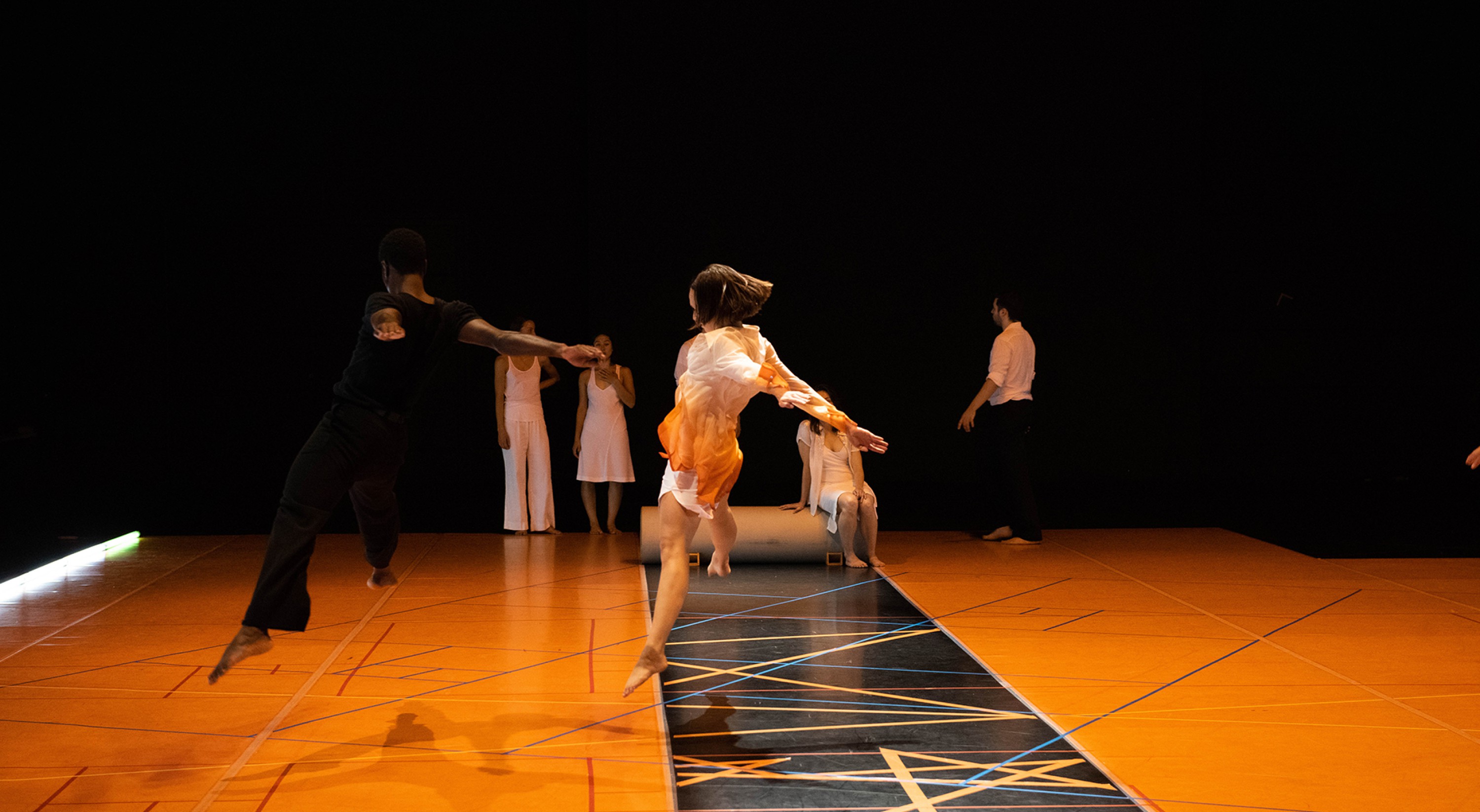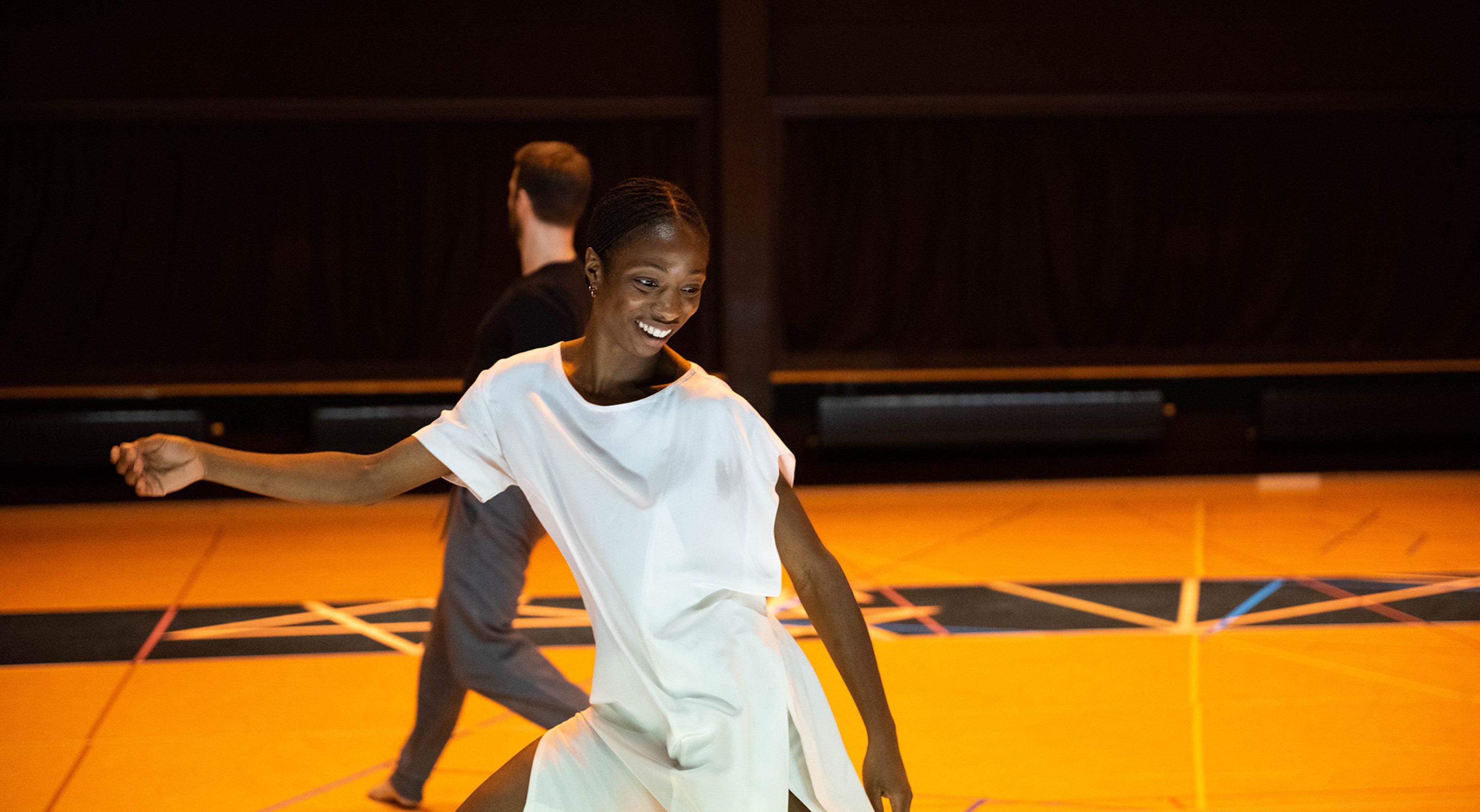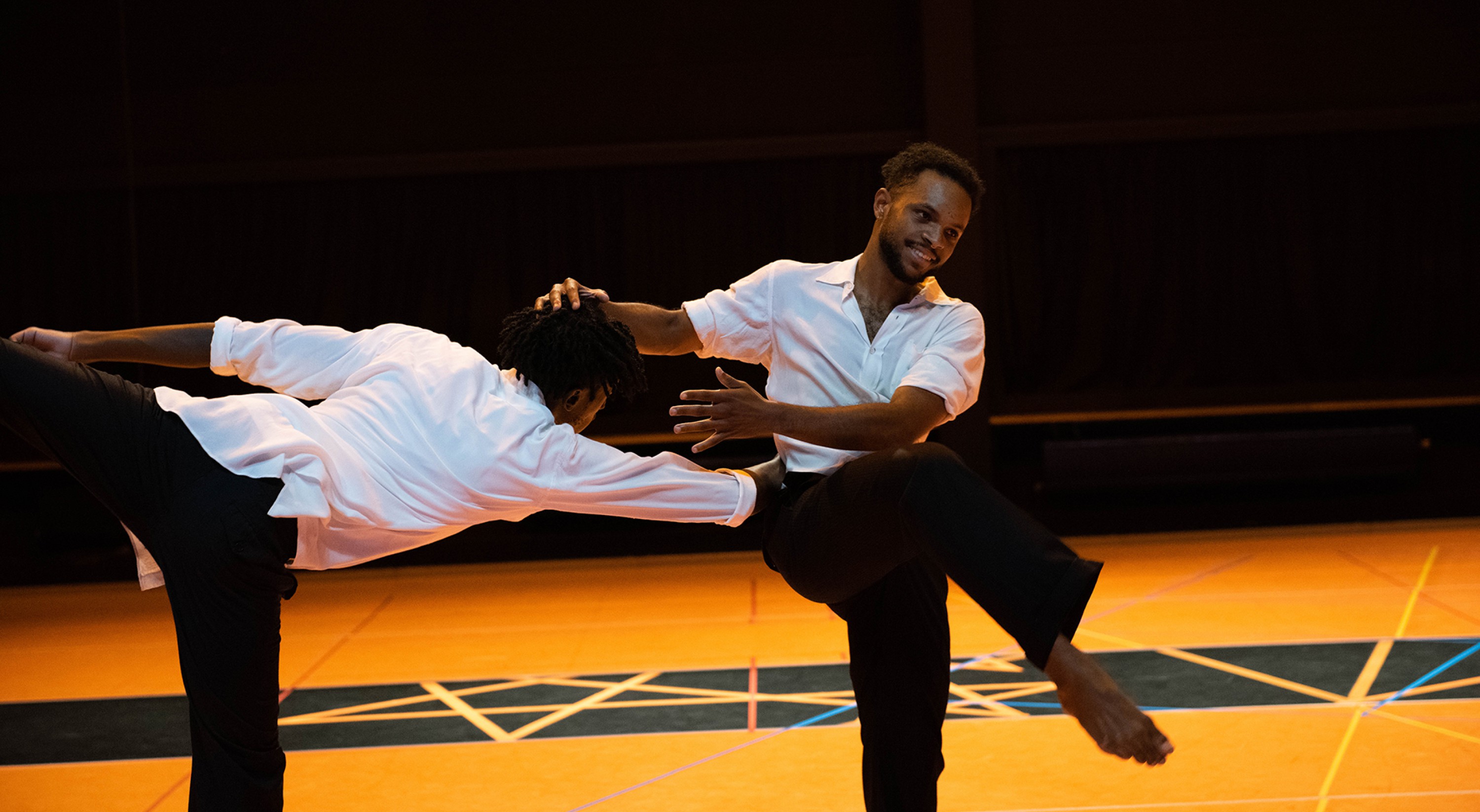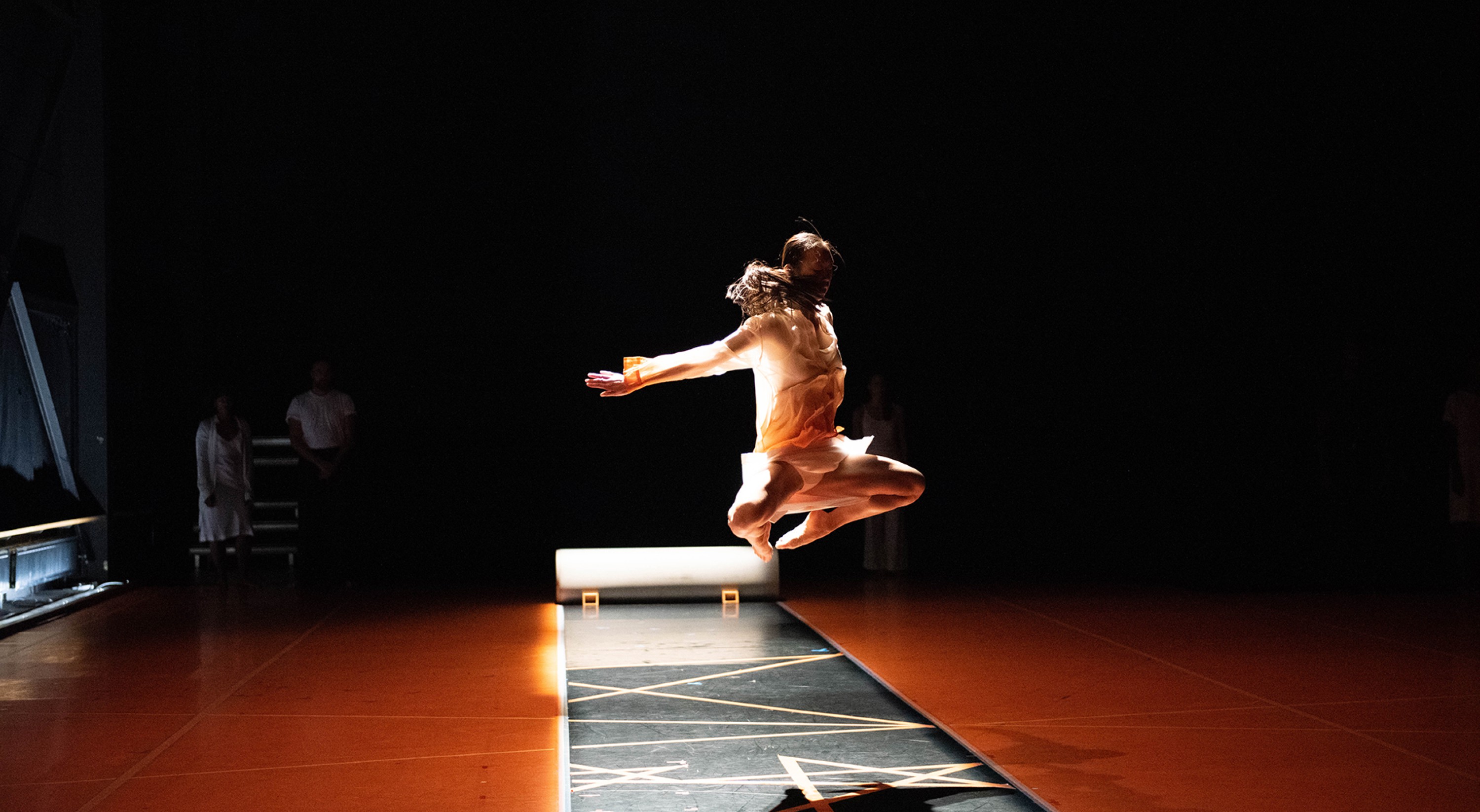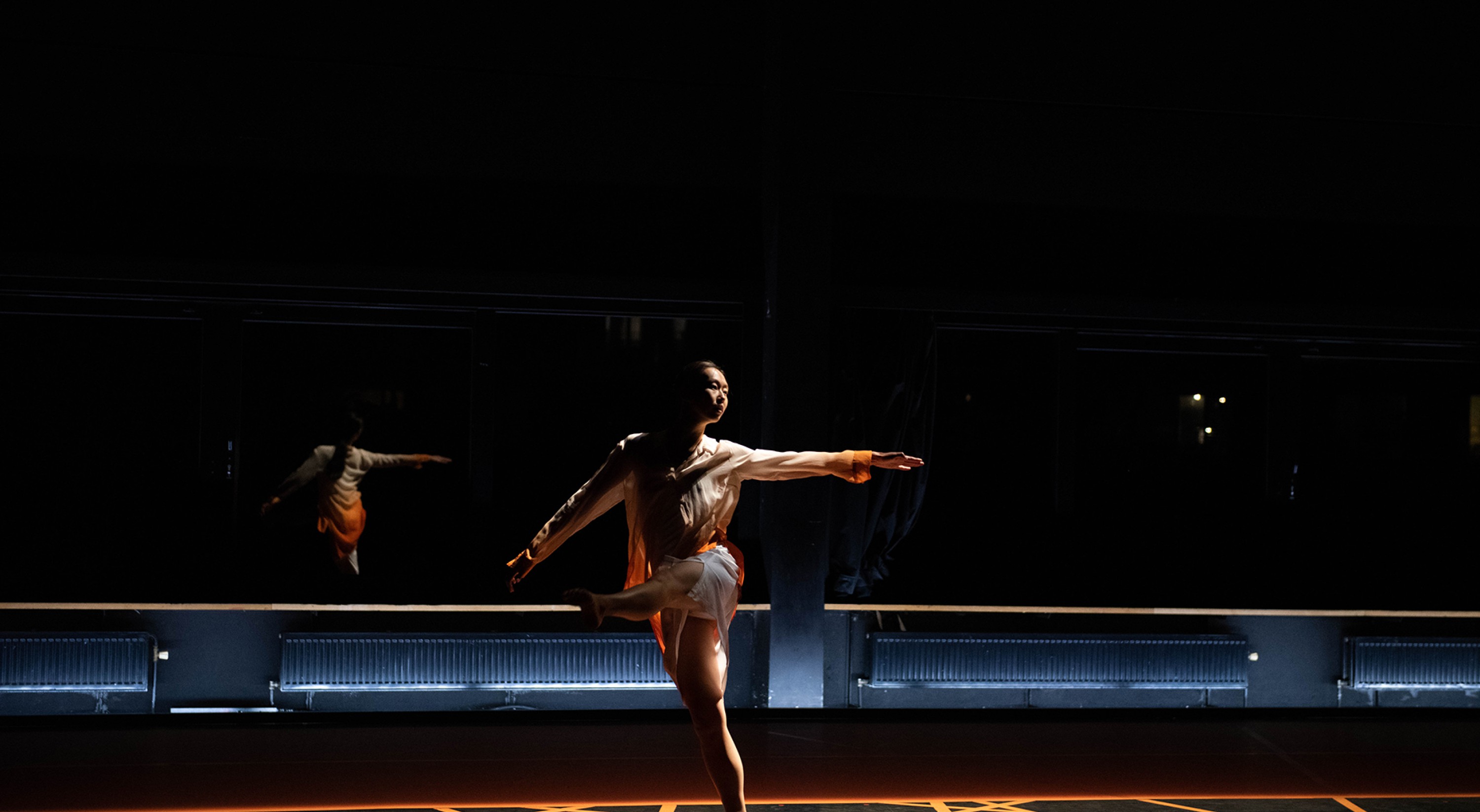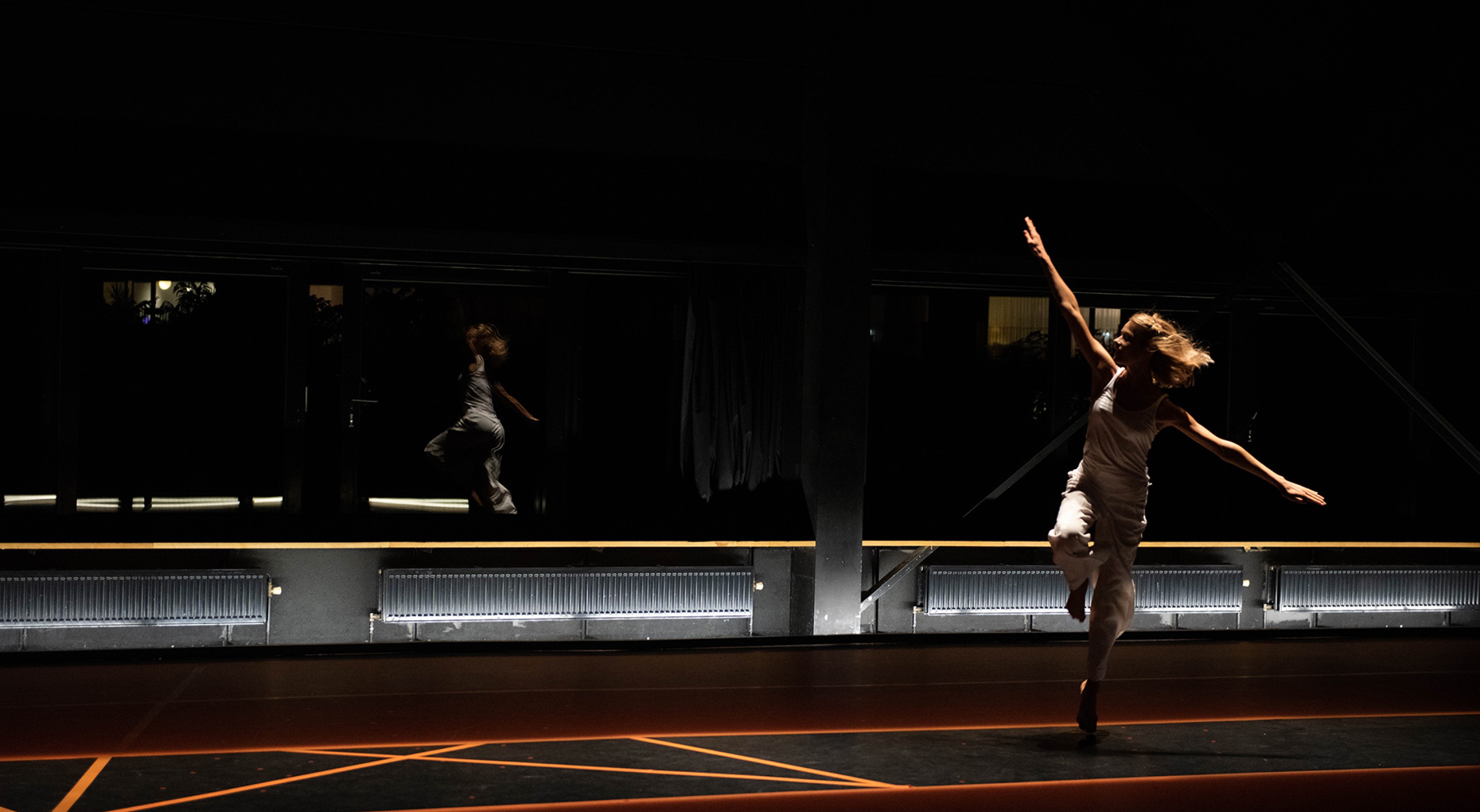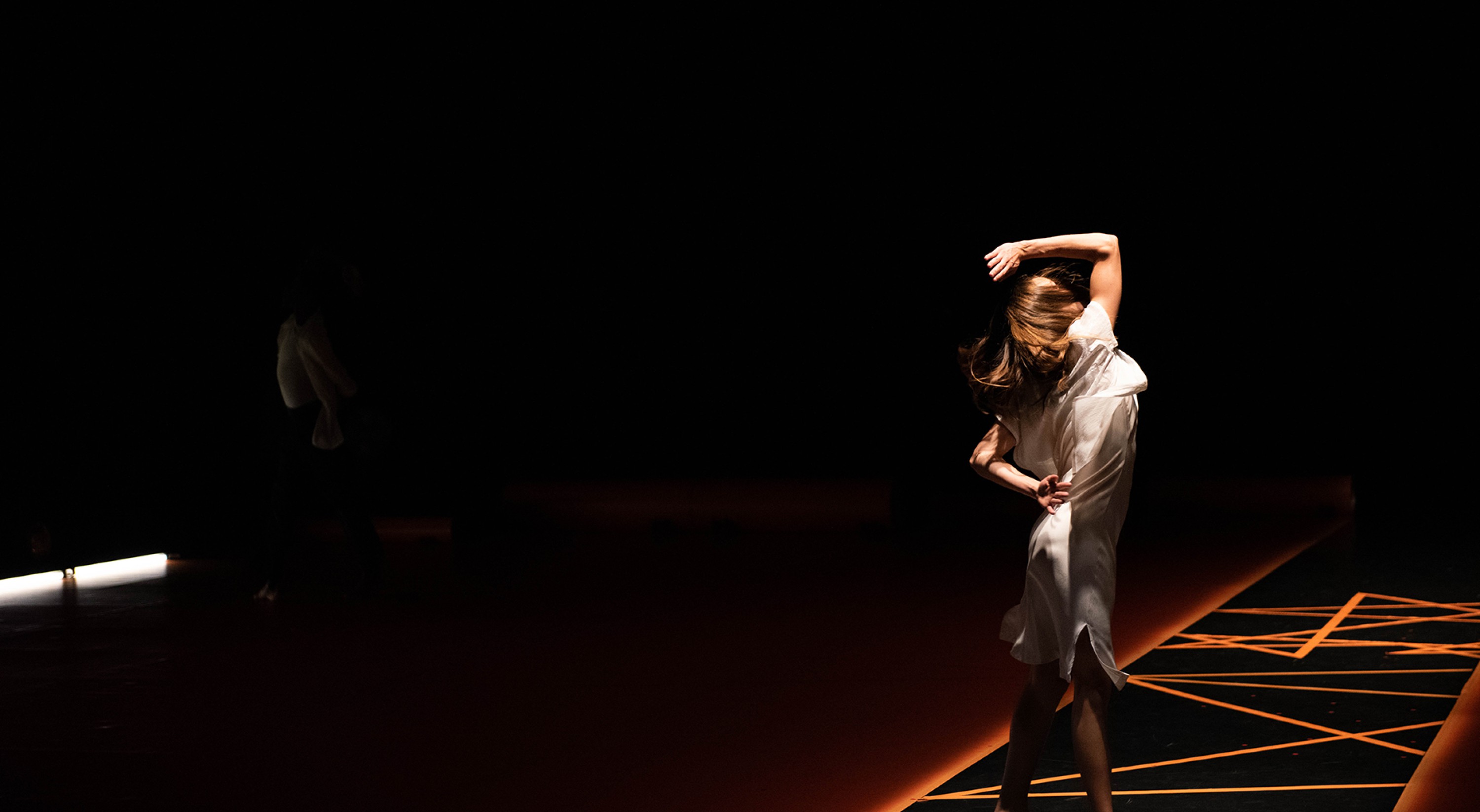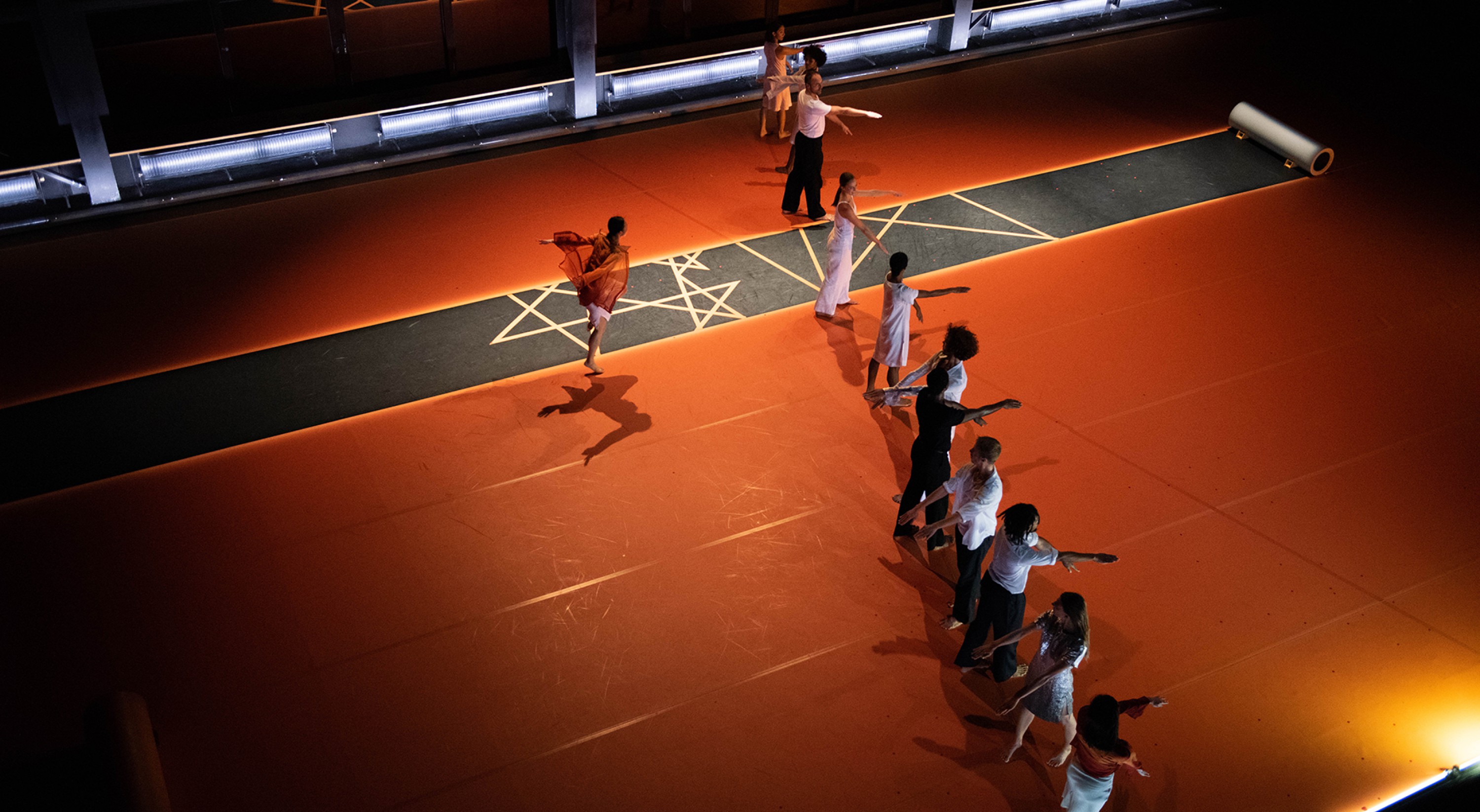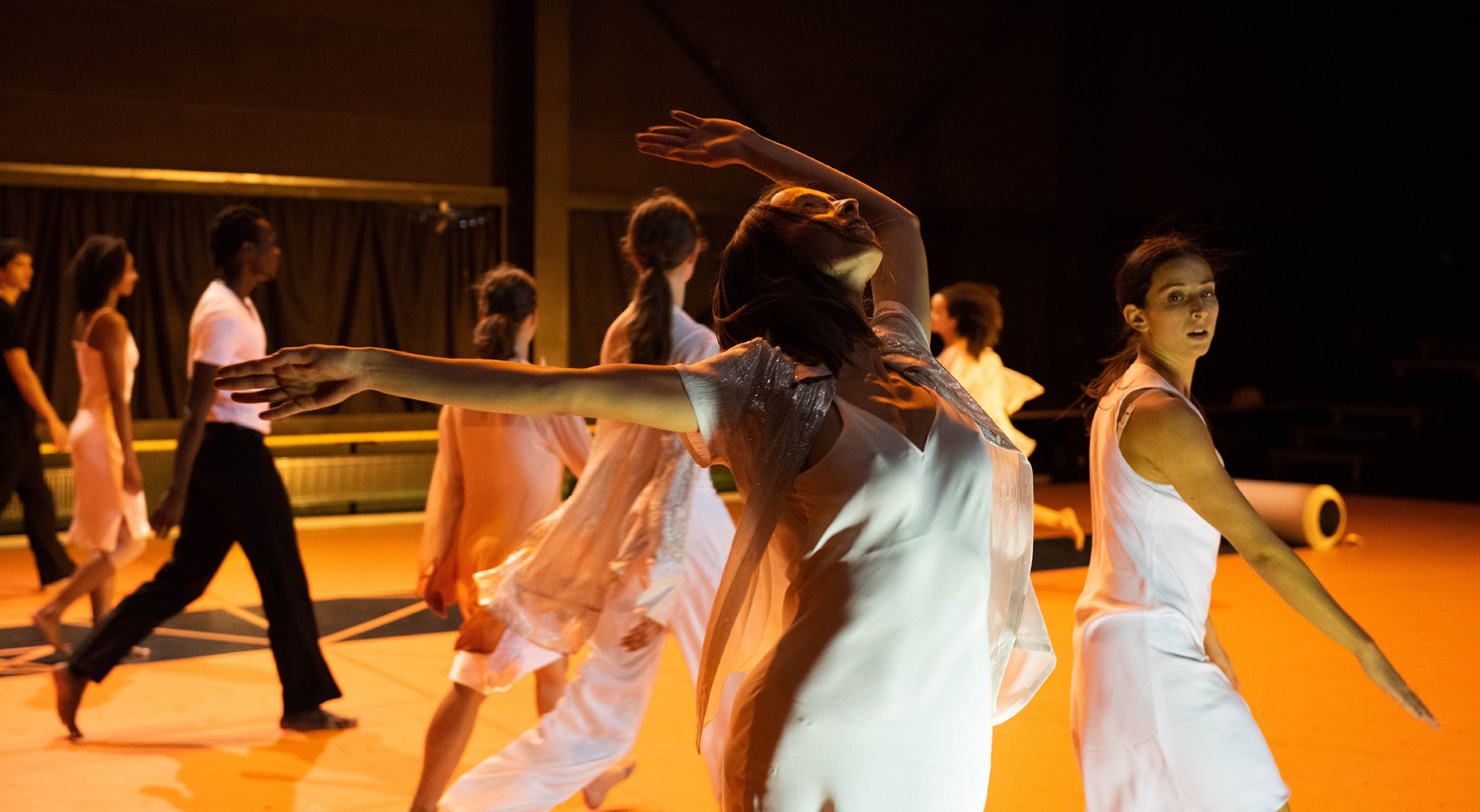Anne Teresa De Keersmaeker
Drumming Live
marchmar 4 – 7
Choreography, Anne Teresa De Keersmaeker
With 12 dancers from the Rosas company
Music, Steve Reich, Drumming
Musical direction, Georges-Elie Octors
Performed by Ensemble Ictus and Synergy Vocals
Stage, decor and lighting design, Jan Versweyveld
Costumes, Dries Van Noten
Produced by Rosas ; La Monnaie / De Munt (Brussells) ; and La Bâtie – Festival de Genève
Coproduced by La Monnaie / De Munt (Brussells) ; Sadler’s Wells (London) ; and Les Théâtres de la Ville de Luxembourg
In association with La Villette (Paris) ; and Festival d’Automne à Paris
With support from Dance Reflections by Van Cleef & Arpels
Rosas receives support from the Commission Communautaire Flamande (Vlaamse Gemeenschap) and the Communauté Flamande.
With the support of Adami
First performed on the 7th August 1998 at Sofiensäle (Vienna) as part of ImPulsTanz (Vienna)
In 1998, fifteen years after her inaugural work, Fase, Anne Teresa De Keersmaeker returned to the music of Steve Reich in order to initiate a redeployment of her composition principles. Set to the entrancing, percussion-based rhythm of Drumming, she brings to the stage a work whose formal purity and geometrical construction overturns perception.
Certain composers occupy a unique place in Anne Teresa De Keersmaeker’s intimate relationship with music. This is the case with Bach, the counterpoint of which has been the driving force behind her steps for several years. The same can be said for the music of Steve Reich, the repetitive structures of which enabled her to elaborate on the fundaments of her vocabulary with Fase, in 1982. In 1998, in her quest to write a choral work that put her choreographic principles to the test of a group of twelve dancers, she turned to the rhythmical rigour of Drumming. In line with how Reich’s work develops – from pared-down minimalism to an enlargement of sound textures and compositional mechanisms – she draws upon all the resources of the body, space and time. Starting off from a single phrase, Drumming combines canons, phrases, which are mirrored, inverted and pushed out of joint. The ensuing choreographic palette seems an unlimited one - sculpted according to the measures produced by the golden ratio, together with interplay with the percussion motifs. Whilst Drumming overwhelms us with the diversity of its combinations, the piece never foregoes the possibility of understanding, or of following the architecture of the movement as the dancers relay each other. Accompanied onstage by the Ictus ensemble, Drumming Live affirms the interdependent nature of the relationship between the different senses - sight, perception and hearing - whilst enabling us to experience, at the same time, structure as it takes form.
See also
In the same place
